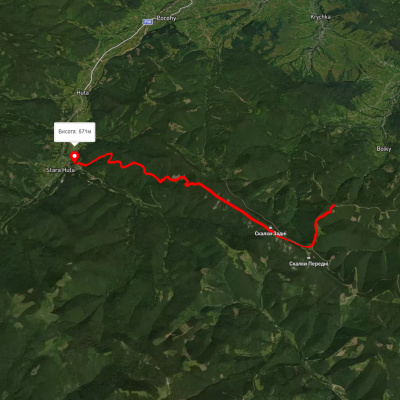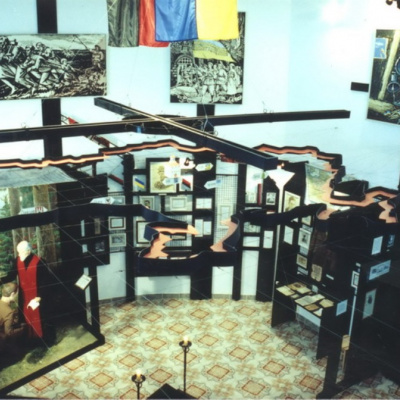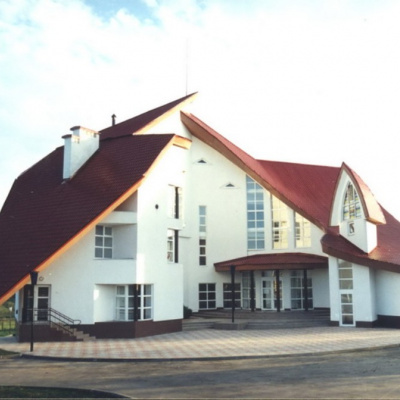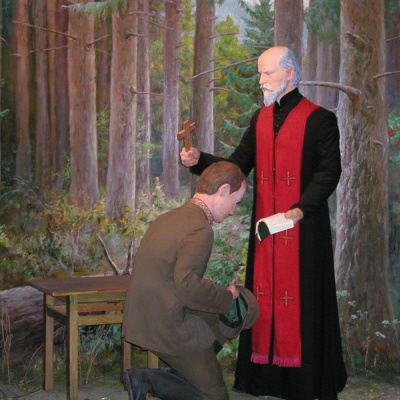Stepan Bandera Historical and Memorial Museum, Kalush
The Stepan Bandera Historical and Memorial Museum, located in the village of Staryi Uhryniv, Kalush region, is dedicated to the personality whose name was given to the national liberation movement of the 1940s and 1950s for the construction and establishment of the Ukrainian state. This name was synonymous with a fighter, a worthy and loyal patriot of his homeland, ready to sacrifice himself to achieve a high goal.
Stepan Bandera (1909-1959) - OUN Regional Leader in the Western Ukrainian lands in 1932-1934; Leader of the OUN Revolutionary Leadership in 1940-41; organizer of marching groups to Ukraine and preparation of the Act of June 30, 1941; organizer of foreign units of the OUN in 1945; author of ideological and programmatic articles on Ukrainian nationalism.
The revival of the famous name began on the thirtieth anniversary of Stepan Bandera's assassination on October 15, 1989, when for the first time in his homeland, in Staryi Uhryniv, Kalush region, a birch cross was erected and a crowded assembly was held. On the initiative of the SNUM, a memorial stone was laid in the family yard on Heroes' Day (the last Sunday in May) in 1990, and on October 14 of the same year, the first monument to Stepan Bandera in Ukraine was erected (by Viktor Rozhyk). At the same time, the chapel of the Intercession of the Blessed Virgin Mary was consecrated, which was destroyed during the communist regime (1984) and restored by the village community. Shortly after, on December 30, 1990, at 5 o'clock, a powerful explosion occurred in Staryi Uhryniv, destroying the monument.
On January 21, 1991, a joint session of the Kalush City and District Councils took place, which decided to build a memorial complex in Staryi Uhryniv.
On June 30, 1991, on the occasion of the 50th anniversary of the proclamation of the Act of Restoration of the Ukrainian State, another monument to the national hero was unveiled in Lviv in his native village.
On July 10, 1991, at 3 am. 20 in the morning, the newly unveiled monument to Stepan Bandera was destroyed. The "operation" was carried out by six soldiers in camouflage robes. In the process, 21-year-old SNUM member Vasyl Maksymchuk, who was guarding the monument, was seriously injured.
On August 17, 1992, during the All-Ukrainian action "The Rumble of the Black Forest" dedicated to the 50th anniversary of the UPA, the third (this time bronze) monument to the OUN leader was unveiled (authors: architect - Zinoviy Davydiuk, sculptors - Mykola Pasikira and Liubomyr Yaremchuk). In the same year, the Stepan Bandera Museum was opened in the surviving part of the family home.
On January 1, 1998, Stepan Bandera, the grandson of the OUN leader, laid a capsule with a message to his descendants in the foundation of the building, thus starting the construction of the newest museum building. The exhibition opened on December 30, 2000. Until that time, the museum operated in a surviving room of the priest's residence, where the Bandera family lived from 1906 to 1933.
On January 1, 2009, on the 100th anniversary of the OUN leader's birth, a new museum exhibition was opened on the basis of the historical and memorial complex: the plebania was restored and re-exposed in the new museum premises. The author of the updated exposition is Mr. A. Haydamakha.
On October 15, 2009, on the fiftieth anniversary of S. Bandera's death, the fourth exhibition hall of the museum was inaugurated. The author of the design was Mr. Bohdan Hubal.
The restoration of the plebania was carried out in accordance with the research conducted by museum staff and local historians. The interior of the rooms in which the Bandera family lived was restored, filled with original items that were the property of the family, authentic items donated by members of intelligent families of Prykarpattia, and collected during research expeditions by museum staff.
The first exhibition hall reveals to visitors the process of forming the national consciousness of Galicians, the state-building processes of the early twentieth century, in which Fr. Andriy Bandera took an active part, and the environment in which Stepan Bandera grew up and matured. Here are materials that illustrate the period of Stepan Bandera's studies at Stryi Gymnasium, his participation in Plast and the underground gymnasium organization. It also reflects his social activities in his native village: the resumption of the theater group, work in the Prosvita reading room, the creation of a cooperative, the foundation of the Meadow Society branch, and, of course, the organization of the nationalist underground in the Kalush region.
The second hall presents the history of the emergence and activities of the underground nationalist organizations UVO and OUN, their struggle against the Polish and Soviet authorities, and reveals the process of Stepan Bandera's formation as the leader of the OUN, as well as the propaganda and other actions he organized. The central part of the exhibition is devoted to the well-known political trial against 12 members of the OUN, which took place in Warsaw (the so-called Warsaw Process). The materials cover the international events that preceded World War II and the new wave of Ukrainian national uprising, which culminated in the proclamation of the Act of Restoration of the Ukrainian State in Lviv and the formation of the Ukrainian State Government, as well as the tragic fate of the young state and its leaders.
The personal life of the Leader is highlighted in the third hall. It features unique photographs from the Bandera family archive: Stepan Bandera's walks with his children, wife, and friends in the forest, trips to the mountains and the sea, and skiing.
The exposition of the fourth hall completes the story of the life of the great fighter for the freedom of Ukraine. It reflects Stepan Bandera's stay in exile, the creation and activities of the OUN Foreign Units, and displays a number of the Leader's personal belongings: a personal typewriter; certificates and documents under the name StepanPopel, under which Stepan Bandera lived; and a posthumous mask. Much attention is paid to the death of the Leader and further events related to this murder.
The heroic struggle of the Ukrainian Insurgent Army in the Kalush district (TV 23 "Magura"), the process of formation and activities of insurgent units in the Kalush region, as well as the activities of members of the nationalist underground in this area are covered in a separate part of the exposition of the fourth hall. The composition "Insurgent in the Forest" adds a special flavor.
This hall also reveals another tragic page of our history: the mass deportations of the population of Western Ukraine to remote areas of the Soviet Union. Not only photographs, but also interesting material items, such as letters, homemade postcards, embroidered handkerchiefs that were given to loved ones as a memento, and many other things, are silent witnesses to these horrific actions.
Visitors are also interested in a hiding place recreated like those used by the underground during the Ukrainian liberation struggle.
In addition, on the territory of the complex, you can see a granite slab on the site where the first two monuments to Stepan Bandera were located, a restored chapel of the Intercession of the Blessed Virgin Mary, a well, and a cellar.
The Stepan Bandera Museum is a branch of the Museum of the Liberation Movement of the Carpathian Region.
Day off: Saturday
Opening hours: from 9:00 to 18:00.
Lunch: from 13:00 to 14:00.
The museum is included in the list of objects checked for accessibility for people with special needs.
Accommodation around Stepan Bandera Historical and Memorial Museum, Kalush:
Які маршрути проходять повз Stepan Bandera Historical and Memorial Museum, Kalush?
Пропонуємо пройти такі туристичні (пішохідні) маршрути через/біля Stepan Bandera Historical and Memorial Museum, Kalush: с. Пасічна, через с. Манява, Манявський вдсп., г. Велика Сивуля до с. Бистриця, с. Манява - вдсп. Манявський, с. Манява - пол. Монастирецька, с. Гута - с. Пасічна, Гута - Погарчина, с. Стара Гута – г. Ігровець – с. Стара Гута
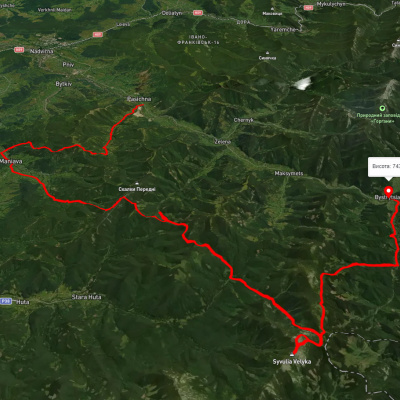
с. Пасічна, через с. Манява, Манявський вдсп., г. Велика Сивуля до с. Бистриця
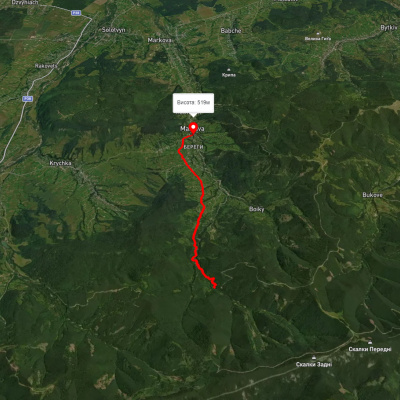
с. Манява - вдсп. Манявський
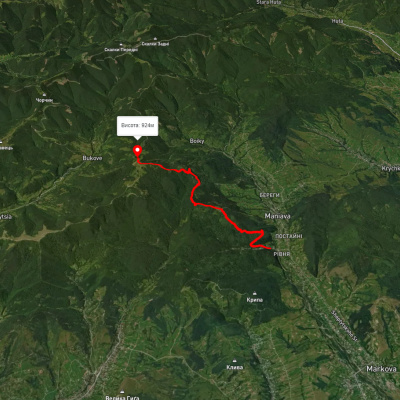
с. Манява - пол. Монастирецька
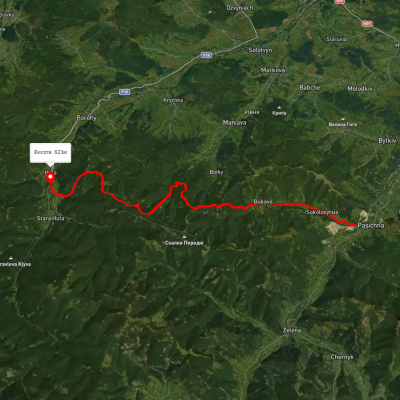
с. Гута - с. Пасічна
